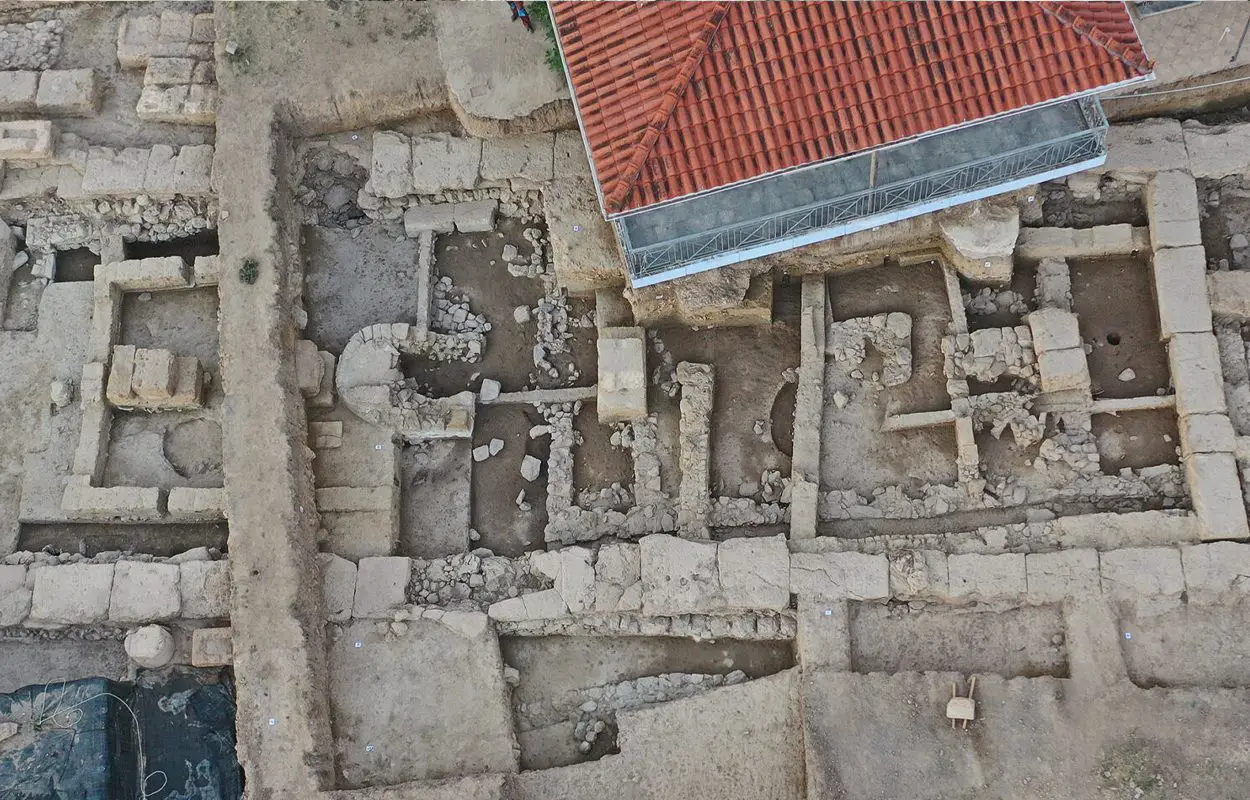Archaeologists excavating a temple complex at the Artemis Amarynthos sanctuary have uncovered evidence of animal sacrificial rites and new insights into the temple configuration.
The Artemis Amarynthos sanctuary is located in Amarynthos on the Greek island of Euboea.
During antiquity, the sanctuary was the centre of worship in dedication to Artemis (the goddess of the hunt, wild animals, and nature) in Northern Greece, and served as the annual pilgrimage destination from Eretria during the Amarysia festival procession.
Excavations at the sanctuary have been ongoing for the past four years, with this season’s dig uncovering further remains of a temple dated to the 7th century BC during the Archaic Period.

According to the researchers, the temple has an apsidal floor plan and measures 34 metres in length, which coincidentally corresponds to 100 feet in the Greek metric system. Archaeologists found hearths or altars where animals were sacrificed to honour Artemis, in addition to layers of ash and calcined animal bones.
In traditional animal sacrifices, the animal was led in procession to the altar and slaughtered. The carcass would then be butchered and the internal organs, bones and other inedible parts burnt as the deity’s portion.

Excavations also found a large number of offerings consisting of vases, weapons, jewellery, and a finely chiseled ivory head with Egyptian features.
Evidence of burning indicates that the temple was partially destroyed by fire during the 6th century BC but was restored with mud-brick walls, before being entirely demolished for a new structure by the end of the century.
Deep trial trenches also uncovered a building from the 9th or 8th century BC, in addition to bronze animal figurines and a terracotta bull’s head from the late Bronze Age, suggesting that the site held ceremonial significance dating back to prehistoric times.
Header Image Credit : ESAG





